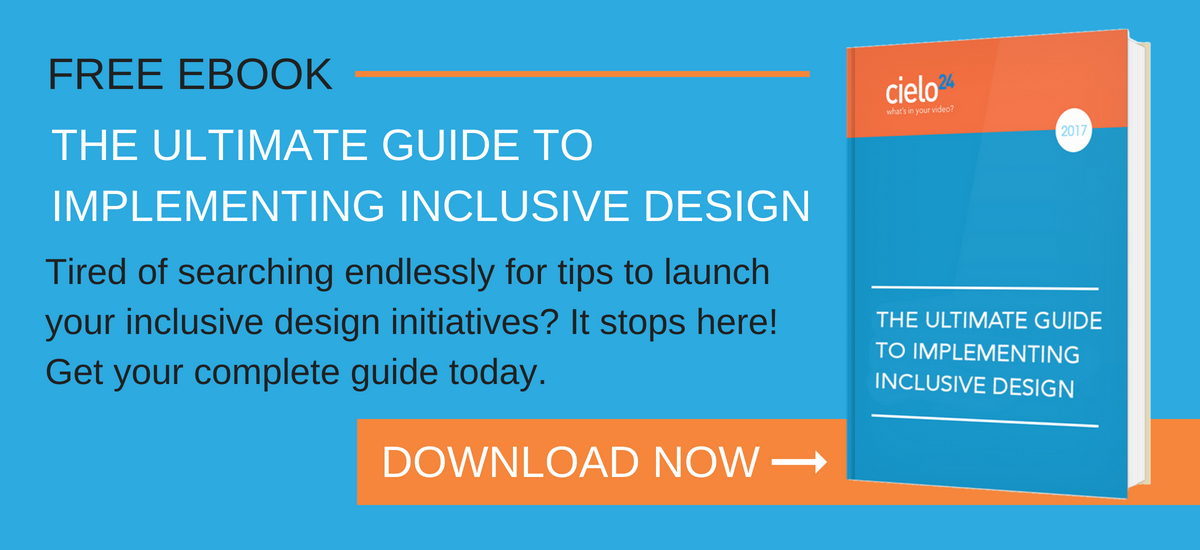Enjoy this handy basic accessibility and universal design list. Make your website more effective and…

3 Keys to Successful Universal Design Across Campus
With a Little Help From Everyone, Universal Design is Easy to Implement
Implementing universal design is one of the best things a university can do to better serve their students. Not only does it give students more options to succeed, but it also corrects the many accessibility gaps present at universities.
These gaps disadvantage students with disabilities and put the university at risk of legal recourse, which can be very costly. Luckily, working universal design and accessibility into the fabric of a school’s policies and procedures means all students are served, and the university will drastically cut costs.
Wondering how to get universal design initiatives off the ground? Follow our three tips based off of wisdom from Jessica Phillips, the senior instructional designer at OSU.
1. Infrastructure
You need systems in place on both the procurement side and course design side. Create policies and procedures that ensure only accessible technologies are acquired by the university. Then create a one-stop resource that details everything accessibility and universal design.
This resource is often a website or webpage run by the IT Accessibility office or a similar disabilities services office. This page should house the university’s accessibility policy and procedures and provide guidance for educators on how to design courses inclusively.
Presenting information in multiple ways and giving students multiple ways to show what they’ve learned are two pillars of universal design that allow students to tap into their own strengths, communication preferences, and attention preferences. These also minimize any accessibility challenges that students with vision or hearing disabilities may encounter.
TAKEAWAY: Building accessibility into university policies, procedures, and courses is key. Plus, it’s much easier and cheaper than retroactively correcting accessibility gaps.
2. Outreach

Universal design is not just one person’s job; it requires collaboration and support from various staff and faculty at the university. This means that open lines of communication and a streamlined way to answer questions is crucial for success.
First, ensure direct communications with faculty about course design. A key way to do this is to create a list of “essential questions” that are always addressed during conversations with faculty about course design.
Second, create a strategy for budget talks. Budget is a huge roadblock for many universities’ accessibility initiatives. The best strategy to use when entering into budget talks is to explain the benefits of universal design for all students and most importantly, highlight its ability to mitigate financial risk in the future.
Lastly, always address accessibility when doing RFPs, RFIs, and new vendor acquisition. This should already be part of the procedures developed when planning your infrastructure, but it is important enough to highlight again. Vendors will not build accessibility into their product if no one is demanding them to. Procurers need to have these conversations with third party companies before anything is signed.
TAKEAWAY: Everyone is involved, and communication is key. Weaving universal design into conversations that are already happening is much easier and more successful than trying to create new conversations around universal design.
3. Empowerment
As we’ve discussed, universal design initiatives are not led by one person; rather, everyone has a role in the process.
The best way to encourage everyone to recognize their roles and responsibilities is to use a marketing strategy where you showcase the champions who are doing good.
This can involve creating a task force of people willing to help drive the initiative forward and marketing their stories. Another tactic is to add these success stories to the conversations that are already happening across your institution.
Think about which stories will inspire action; is it the ones about mitigating risk, the ones about real students who have disabilities, or the stories about universal design being successful?
TAKEAWAY: Inspiring a call to action university-wide, not just with one person or department is key. As is leveraging the champions, so that the individuals who are doing things right have a platform to talk more about their successes.
Summary
Universal design is gaining more traction and universities are becoming more and more aware of accessibility across campus.
Successful implementation is all about approaching it as a group effort. The IT Accessibility department can’t do alone. Finding opportunities to weave universal design into already existing conversations and procedures is a low effort and high impact way to get started.
For more information on accessible eLearning and course design, feel free to watch the webinars below.




